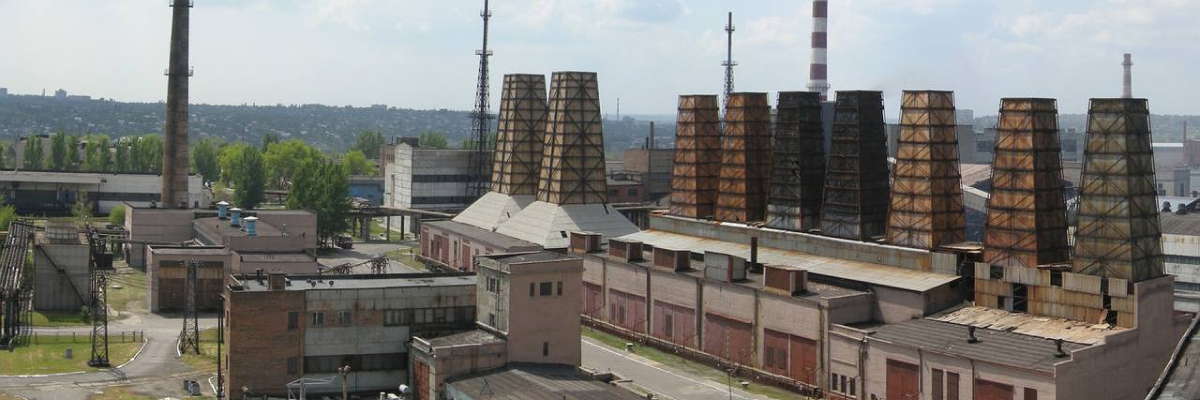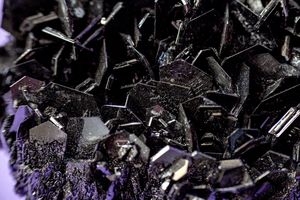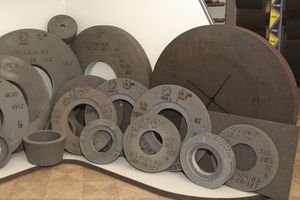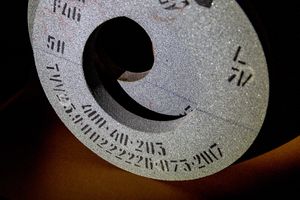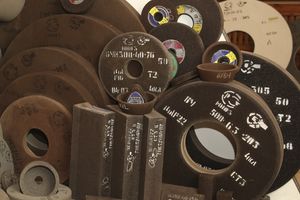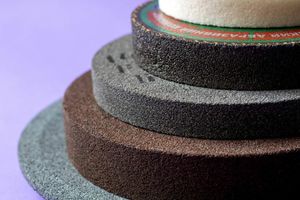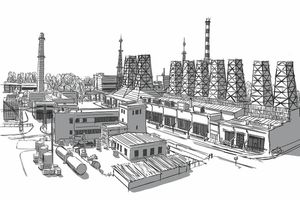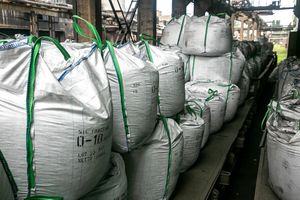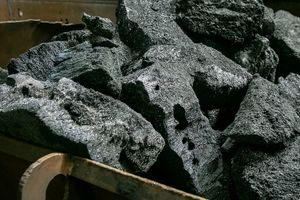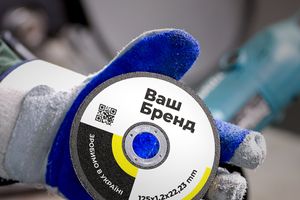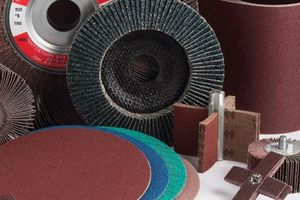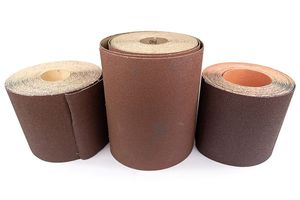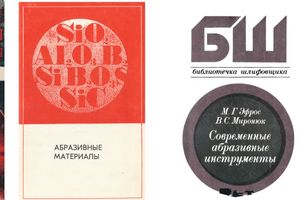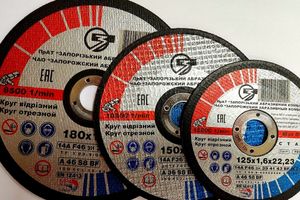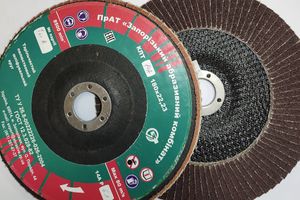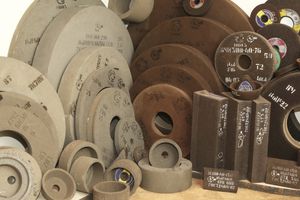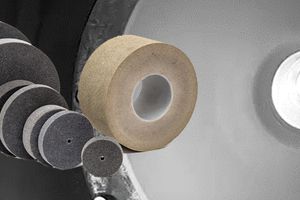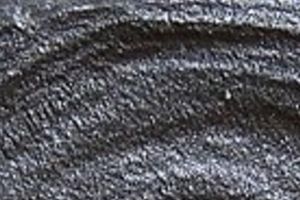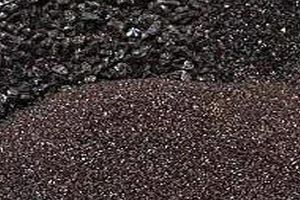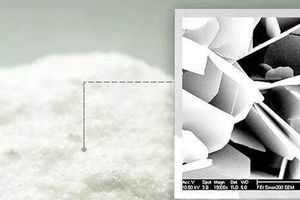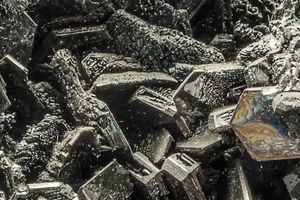Abrasive tool manufacturing technology
Abrasive tools on different bonds have different manufacturing methods.
Abrasive tools are produced on the following types of bonds:
— Ceramic bond
— Bakelite connection
— Vulcanite bond
— Glyphtal ligament
— On the basis of foamed polyvinyl formal
Abrasive tool on ceramic bond:
Ceramic ties are made from a mixture of clay or kaolin, feldspar and (or) pegmatite, boron glass, talc and other mineral materials. All materials used for the manufacture of ties are ground to a size of 40 microns on special grinding equipment and homogenized in a mixer (mixer) in a certain ratio, according to the recipe, to obtain a certain fire resistance and chemical composition.
Next, a molding mixture is prepared, consisting, according to the recipe, of a certain amount of abrasive grain, binder, moisturizer and (if necessary) an adhesive additive. Mixing is carried out for a certain time in special mixing machines. After preparation, the molding mixture is passed through a sieve with the necessary meshes to eliminate lumps and foreign particles and is fed to the molding units.
Forming of blanks is carried out in special molds on forming units created on the basis of hydraulic or mechanical presses. After dosing, stacking and pressing, the circle blanks are sent to drying on metal or cement slabs. In some cases, molding is carried out by methods of vibropressing, extrusion or casting of blanks on special equipment.
Drying of blanks is carried out in periodic or continuous drying units at t=90...100°C. Natural drying is allowed for small blanks. After drying, the blanks are placed on furnace trolleys and fed into tunnel, slot or chamber furnaces, where the final heat treatment of the blanks is carried out at temperatures of 1220-1280°C.
After firing, almost the entire abrasive tool undergoes mechanical processing (outer diameter, holes and end surfaces) on special machines. Next, calibration, marking, control of the tool for compliance with regulatory and technical documentation and product packaging is carried out.
Abrasive tools on a bakelite bond:
The components of the abrasive tool on the bakelite bond, namely the abrasive material, phenol-formaldehyde resin in liquid (bakelite) and powder form (pulver bakelite) with fillers (cryolite, gypsum, pyrite, antimonite, etc.), are dosed in the ratio determined by the recipe and in the order of mixer.
The preparation of the molding mixture is carried out in special mixers (usually two-stage).
The prepared mixture is wiped through the sieve of a wiping machine. In some cases, to give time-constant properties, the mixture is "laid out" for several hours at room temperature ("mass aging" operation), then passed through a sieve again. Pressing of blanks is carried out in special molds on forming units (mainly on the basis of hydraulic presses).
Dosing and placing the molding mixture in the mold is done manually or mechanically. Pressing is carried out under high specific pressures - from 200 to 500 kgf/sq.cm. When pressing glass mesh-reinforced circles, the mass is laid layer by layer with glass mesh discs (SPAP brands - BZh, M, etc.). The number of disks in the circles depends on the thickness and diameter of the circles and can range from 1-3 (in cutting circles) to 6-10 (in scraping circles).
Metal rings, from 1 to 3 in a circle, are used for strengthening in the production of scraping circles. Heat treatment (bakelization) of blanks is carried out in chamber or tunnel furnaces, which have a special name - bakelizers.
— Heat treatment time from 6 to 36 hours.
— Final temperature 180 - 220°C.
After heat treatment, if necessary, the abrasive tool is subjected to mechanical processing (outer diameter, holes and end surfaces) on special machines. Next, calibration, marking, control of the instrument for compliance with regulatory and technical documentation and product packaging are carried out.
Abrasive materials on a vulcanite bond:
Vulcanite compounds are multi-component compositions based on synthetic rubbers. The composition includes: sulfur vulcanizing agent, organic accelerators and vulcanizers (captax, thiuram, etc.), fillers (metal oxides, salts, synthetic resins, etc.), softeners.
Binding and forming mixture is prepared on special mixing equipment: rollers or mixing machines (similar to those used in the rubber industry). Bonding is the process of mixing rubber with other components to a homogeneous state.
There are two ways to form the blanks of circles
— By rolling the mixture on rollers and cutting blanks.
— By pressing circles in molds from a loose powdery mixture, prepared in mixing machines and loosened in special disintegrator-type disintegrants.
Round blanks are subjected to heat treatment (vulcanization) for 6-16 hours. vulcanization circles undergo mechanical processing. Next, calibration, marking, control of the instrument for compliance with regulatory and technical documentation and product packaging are carried out.
Tools on the Glyphtal ligament:
Glyphthalic bond is a product of the interaction of glycerol with phthalic anhydride (in powder form) and the moisturizer is liquid Bakelite. The technology of making the tool is similar to the technology of making it on a bakelite bond.
Tools based on foamed polyvinyl formal (foam):
The manufacturing process consists in the mechanical foaming of a composition consisting of an aqueous solution of polyvinyl alcohol, abrasive grain, formalin, as well as an acid catalyst, foaming agents, and other additives in specially designed stirrers. The foam mass is poured into molds.
Heat treatment is carried out at a normal temperature of 50 - 80°C for 5 - 8 hours. Hardened as a result of heat treatment, the blanks are washed from unreacted reaction products in special pressing presses with running water, squeezed and dried to a constant weight. Then the products are subjected to cutting and mechanical processing.
Next, calibration, marking, control of the instrument for compliance with regulatory and technical documentation and product packaging are carried out.
